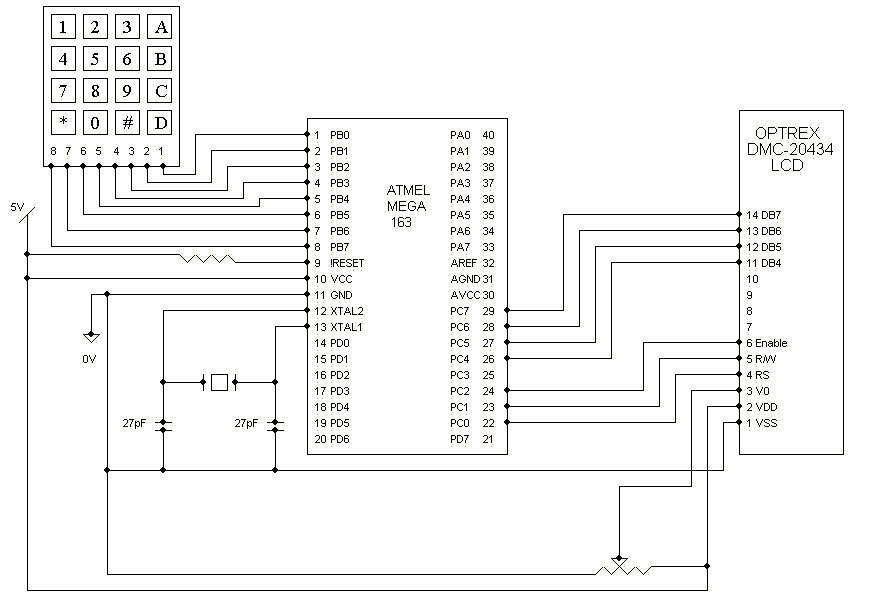|
1 Atmel Mega163 microcontroller chip 1 Atmel STK500 development board 1 4x4 keypad 1 Optrex DMC-20434 4x20 character LCD 1 breadboard (optional) 1 GPS receiver (or simulator) capable of outputting NMEA v0183 RMC sentences via RS232 connection |

|
4800 BAUD 8 Data Bits 1 Stop Bit No Parity No Flow Control |
